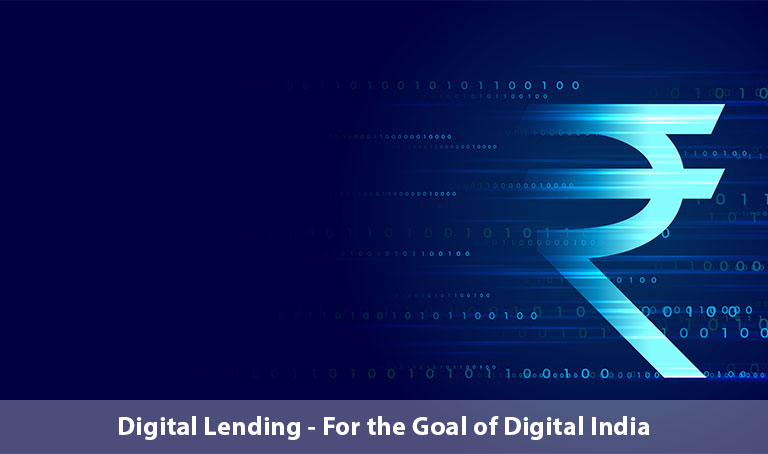Digital Lending - For the Goal of Digital India
Updated On : Nov 2022
What is Digital Lending?
Digital Lending is the process of getting credit via an online medium. It involves recovering and disbursing loans via different platforms like web or mobile applications. This helps in fast disbursal and lower costs. The Lending Service Providers (LSP) operate in collaboration with NBFCs which disburses credit to the customers.
As per the latest report published by Inc42’s "State of Indian Fintech Ecosystem Q3 2022," In focus: Nedbank’s, the Indian digital lending market is expected to reach $1.4 trillion by 2030. The market size is set to grow from $270 billion in 2022 at a CAGR of 22% between 2022 and 2030. The data analysis indicates that digital lending is set to account for 60% of the total Indian fintech market by 2030.
The dependency on digital media in India has risen post-pandemic. Banks and financial institutions have started providing more digital services to improve customer service. Digital lending is becoming more popular than regular options because it provides financial assistance via a digital medium.
The following are the reasons why digital lending is increasing:
Significant rise in fintech start-ups
Changed digital behavior
Less time consumption with digital usage
Reduced cost
Seamless process
New business opportunities
Following are the different ways the government of India is promoting digital credit growth in India:
- Policies and norms:
The Government of India’s federated consent architecture and newly created payments ecosystems are the catalysts for digital lending in India. Different measures regarding interest rates and liquidity regulations are taken by the government. All these measures are enabling NBFCs and fintech to serve customers efficiently.
- Video KYC:
RBI has approved the e-KYC via Aadhar card-based KYC of customers via video calls. Video KYC is a cost-effective and seamless customer onboarding process. This method is an advantage for banks and NBFCs.
- Demonetization a boost to digital payments in India:
In the year 2016, the Indian government demonetized some currency denominations. This situation led to a boost in the digital payment culture in India. NPCI realized the need of the hour and different innovative digital applications like Fastag for toll collection, IMPS, and UPI were started. Indian fintech firms use digital payments and technology to provide a unified customer experience.
Factors that will help to boost the digital loan market in India:
- Efficient processing
Digital lending companies like NBFCs, MFIs, and fintech have the technology to examine buyers’ profiles; they can easily decide whether to give a loan or not and decide the amount. Technology helps with better decision-making.
- High-end metrics for better decision making
The evolution of digital lending in India is helping to provide advanced and sophisticated metrics, and the data is getting processed at speed. This is helping lending companies provide better insights about their customer profiles and make better-informed decisions.
- Stronger integrations for seamless functioning
The financial organization has a cloud-based connection with the data sourcing agencies and credit bureaus, and they have a system of internal data sharing between branches and employees. As a result, they require more robust integrations.
- Customer-centric approach
The goal of the Indian digital loan market is to provide ease of documentation and processing. Customers like the less time-consuming, hassle-free, and convenient experience of getting a loan.
Digital lending is the future, so many big players are entering the digital lending industry. Digital lending has proven to contribute to financial inclusion in India.
Nelito offers customized solutions & services for its clients from finance and other sectors. To know more about it, write us at marketing@nelito.com or visit us here.


Comments :